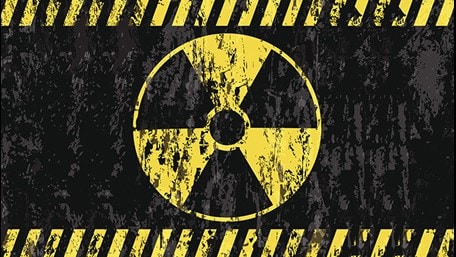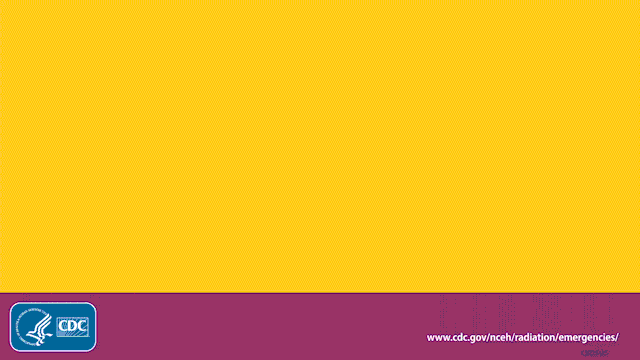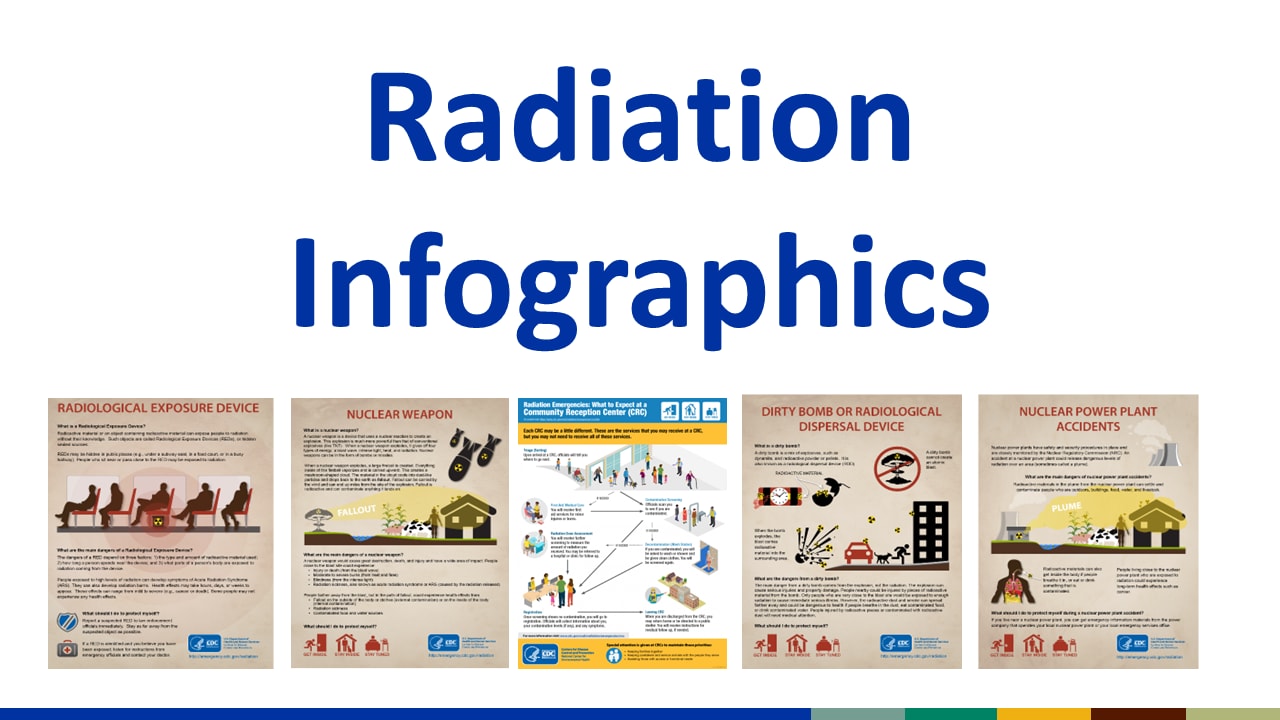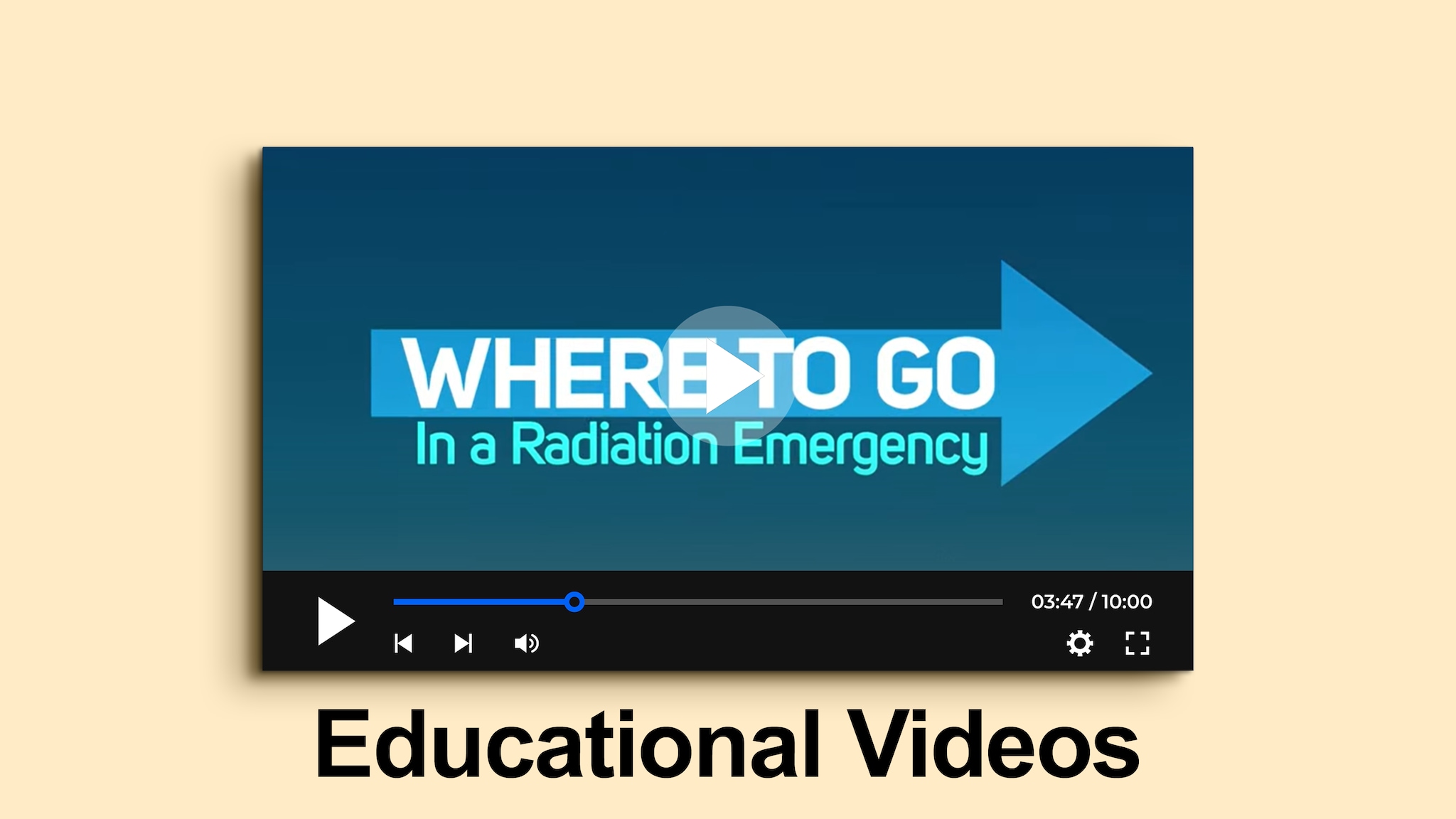Key points
- Radiation emergencies may be intentional or unintentional.
- Radioactive materials released into the environment in an emergency could expose people and contaminate their surroundings and personal property.
- In most instances, the best thing to do is to get inside, stay inside, and stay tuned for more information from emergency officials.

Overview
Radioactive contamination and radiation exposure could occur if radioactive materials are released into the environment as the result of an accident, an event in nature, or an act of terrorism. Such a release could expose people and contaminate their surroundings and personal property.
Potential sources
Radiation emergencies may be intentional (e.g., caused by terrorists) or unintentional. Below are some examples of different types of radiation emergencies.
Improvised nuclear device (IND)
- A nuclear emergency involves the explosion of a nuclear weapon or improvised nuclear device (IND).
- The explosion produces an intense pulse of heat, light, air pressure, and radiation.
- Nuclear explosions produce fallout (radioactive materials that can be carried long distances by the wind).
Dirty bomb or radiological dispersal device (RDD)
- A dirty bomb (also known as a radiological dispersal device) is a mix of explosives, such as dynamite, and radioactive powder or pellets.
- A dirty bomb cannot create an atomic blast.
- When the explosives are set off, the blast carries radioactive material into the surrounding area.
Radiological exposure device (RED)
- A radiological exposure device (also called a hidden sealed source) is made of or contains radioactive material.
- REDs are hidden from sight to expose people to radiation without their knowledge.
Nuclear power plant accident
- An accident at a nuclear power plant could release radiation over an area (called a plume).
- Nuclear power plants have safety and security procedures in place and are closely monitored by the Nuclear Regulatory Commission (NRC).
Transportation accidents
- Radioactive material is transported by trucks, rail, and other shipping methods.
- Shipments involving significant amounts of radioactive material are required to have documentation, labels, and placards identifying the cargo as radioactive.
Occupational accidents
- Radiation sources are found in a wide range of settings such as health care facilities, research institutions, and manufacturing operations.
- Accidents can occur if the radiation source is used improperly or if safety controls fail.
What to do

Get Inside
If you are outside or in a car when a radiation emergency occurs, get inside a building and take shelter as soon as you can. The walls of your home can block much of the harmful radiation. It is important to stay inside until officials provide instructions or say it is safe to go outside.
Stay Inside
If you are outside when a radiation emergency occurs, get inside the closest building as soon as you can. If you are already inside, stay there and shelter in place.
Getting inside of a building and staying there is called "sheltering in place". As soon as you get inside, decontaminate yourself (remove and wash radioactive material from your body). Even just removing your outer layer of clothing can remove up to 90% of radioactive material.
Once you get in a building, there are things you can do to stay safe inside. Always listen for additional instructions from emergency officials and radiation experts.
If you have loved ones in schools, day cares, hospitals, nursing homes, or other facilities during a radiation emergency, stay where you are. Going outside to get loved ones could expose you and them to dangerous levels of radiation. Children and adults in schools, daycares, hospitals, nursing homes, or other places will be instructed to stay inside until emergency responders know that it is safe to evacuate. Facilities have plans in place to keep everyone safe inside.
Stay Tuned
It will be important to stay tuned once you get inside for updated instructions from emergency response officials. As officials learn more about the emergency, they will be communicating the latest information to the public. Television, radio, and social media are some examples of ways that you may receive information.
You should not leave your building or place of shelter until officials or emergency responders have said it is safe, unless you have a life-threatening condition or if the building is unstable.
Health impacts
Radiation can affect the body in a number of ways. Depending on the radiation levels, the health effects may start shortly after an exposure or may not be apparent for many years. These can range from mild effects, such as skin reddening, to serious effects such as cancer and death.
Short-Term Health Effects
- Acute Radiation Syndrome: Happens when exposure to a large dose of radiation over the entire body occurs over a short time.
- Cutaneous Radiation Injury (CRI): Happens when exposure to a large dose of radiation causes injury to the skin.
Long-Term Health Effects
- Cancer: People who receive high doses of radiation could have a greater risk of developing cancer later in life, depending on the level of radiation exposure.
- Prenatal Radiation Exposure: It is especially important that pregnant women follow instructions from emergency officials and seek medical attention as soon as emergency officials say it is safe to do so.
- Mental Health: Any emergency, including those involving radiation, can cause emotional and psychological distress.
People at increased risk
A developing fetus is the most susceptible to health effects from radiation exposure.
Groups most at risk are
- Infants
- Children
- Older adults
- Pregnant women
- People with weaker immune systems
Follow protective action instructions and seek medical attention after a radiation emergency as soon as it is safe.
Learn other specialized information for handling radiation emergencies while pregnant.


